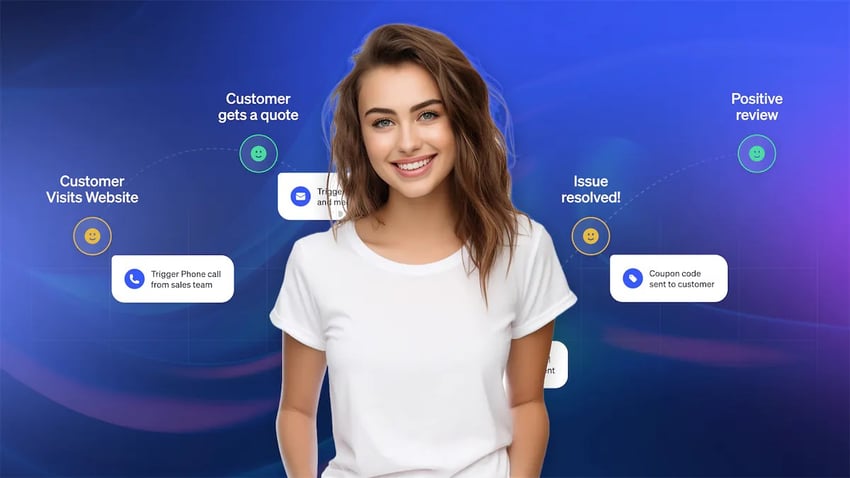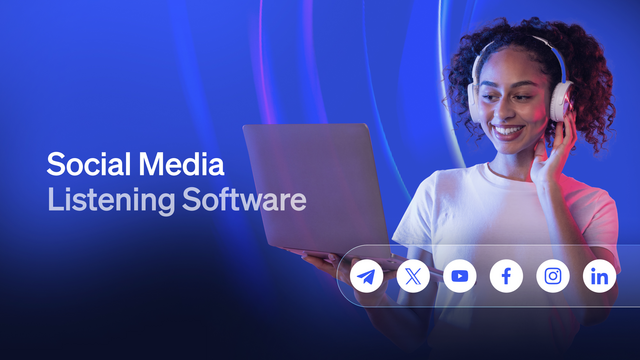Companies aiming to leapfrog their rivals can’t simply let their brand take care of itself. Building a robust online presence for your business doesn’t happen by accident; it takes a clear vision and purposeful action.
If you’re looking to maximize your company’s online presence, you must start with the essentials before moving toward modern strategies used by successful brands to protect their online reputation in the age of AI.
Keep reading to learn how to join these frontrunners.
Why It’s Important To Build Your Business’ Online Presence
The data speaks for itself. In our hyper-connected world, virtually 99% of consumers turn to the internet for information about local businesses. According to BrightLocal, 80% of U.S. consumers search for local businesses every week.
Additionally, the top organic result on Google now captures approximately 39.8% of all clicks, a figure that rises to 42.9% when a featured snippet is present (First Page Sage).
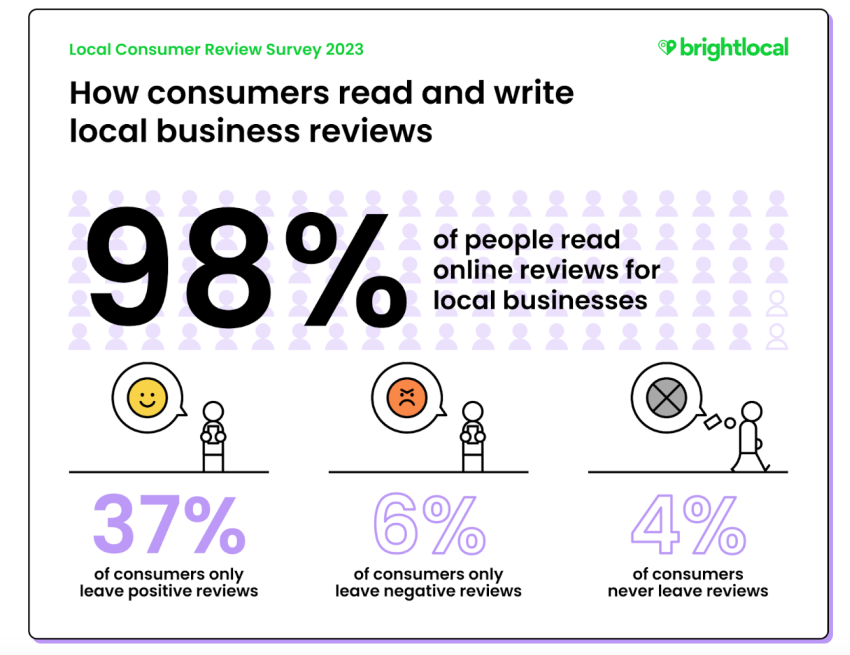
But with so many channels, platforms, search engines, and AI agents like ChatGPT and Gemini becoming widespread, where should a business owner start?
You guessed it: Google.
While Google remains the heavyweight champion, the landscape is shifting. BrightLocal data shows that while Google is the most used review platform, usage of alternatives like Apple Maps and Trustpilot is growing.
Beyond Google, it’s important to monitor your online presence where your customers are. Social media giants like Facebook, Instagram, and TikTok provide opportunities to connect, while B2B brands are seeing a massive resurgence on LinkedIn.
Depending on your business’s niche, review sites like TripAdvisor, Yelp, and the BBB can significantly influence consumer choices. Focusing on building your presence across the most important networks goes a long way toward building an exceptional customer experience.

Strategies To Build Your Online Presence
Here are a few tried and tested strategies to build your online presence:
1. Boost search engine visibility with SEO
Did you know that less than 1% of users scroll past the first page of search results? Earning a top spot on search engine results pages (SERPs) isn’t just a badge of honor; it’s a necessity to ensure your business gets noticed.
That’s where Search Engine Optimization (SEO) comes in. However, SEO in 2026 looks different from what it did just a few years ago.
The Rise of AI Overviews (AIO) Google’s AI Overviews now appear at the top of search results for many queries, offering users a quick answer without needing to click a link. To rank here, your content needs to demonstrate E-E-A-T (Experience, Expertise, Authoritativeness, and Trustworthiness) and directly answer the questions your customers are asking.
Quality mentions signal to search engines that your site is credible. If you have your content marketing formula perfected, you’re likely to reap the rewards. SEO increases your visibility, amplifies brand awareness, and bolsters website traffic. Simply put, it launches you ahead of your competition.

2. Claim and optimize online listings
The foundation of building an online presence includes claiming and polishing your listings on platforms like Google Business Profile (GBP) and Yelp. Think of these as your digital storefront. To maximize your reach, start here before venturing onto niche-specific platforms.
Optimize listings with great content and keywords. Upload vivid photos, craft engaging descriptions, target specific audience needs, and shoot the occasional video to give folks a peek behind the scenes. Always keep your operational hours up-to-date, as 62% of consumers say they would avoid using a business if they found incorrect information online.

Since most searches are conducted via smartphones, attract more customers by keeping your listings up-to-date and appealing. Treat your listings the same way you would your website: use the same keyword research for your profile descriptions.
Also, take advantage of all the free features of your listing. Use the less frequently used features that many competitors may be neglecting, such as promotions, GBP updates, and the FAQ section. Regularly updating your Google Business Profile signals to the algorithm that your business is active and relevant, significantly increasing views.
3. Build trust with reviews
Have you ever browsed a restaurant’s Yelp page before trying their food or sifted through Google reviews before buying software? You’re not the only one!
75% of customers regularly read online reviews before visiting a business.
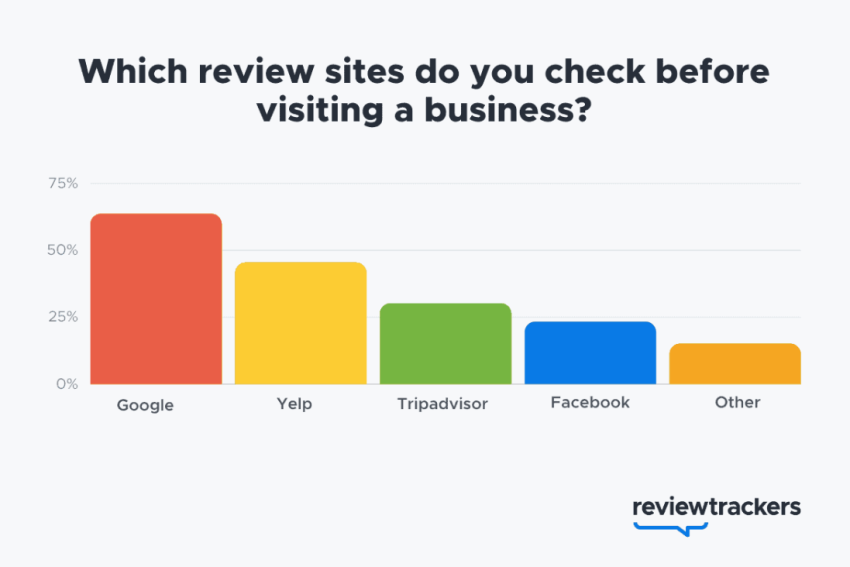
But understanding the importance of customer reviews is only half the battle. Go the extra mile by attracting glowing reviews and turning them into a loyal fanbase.
Responsiveness is ROI. This is where businesses often miss the mark. You must engage with reviews, whether they’re positive or negative. According to a 2024 BrightLocal survey, customers are 41% more likely to use a business that responds to all of its reviews than a business that doesn’t respond to any.
4. Leverage social media channels strategically
Recent studies show that social media is becoming a search engine itself, especially for younger demographics. But while its potential is undeniable, embarking on every platform isn’t the key — strategy is.
It all starts with getting clear about who you’re speaking to.
- Gen Z: TikTok and Instagram Reels are the new search bars.
- Professionals: LinkedIn has become a powerhouse for B2B influence and networking.
- Broad Reach: Facebook and YouTube remain essential for mass visibility.
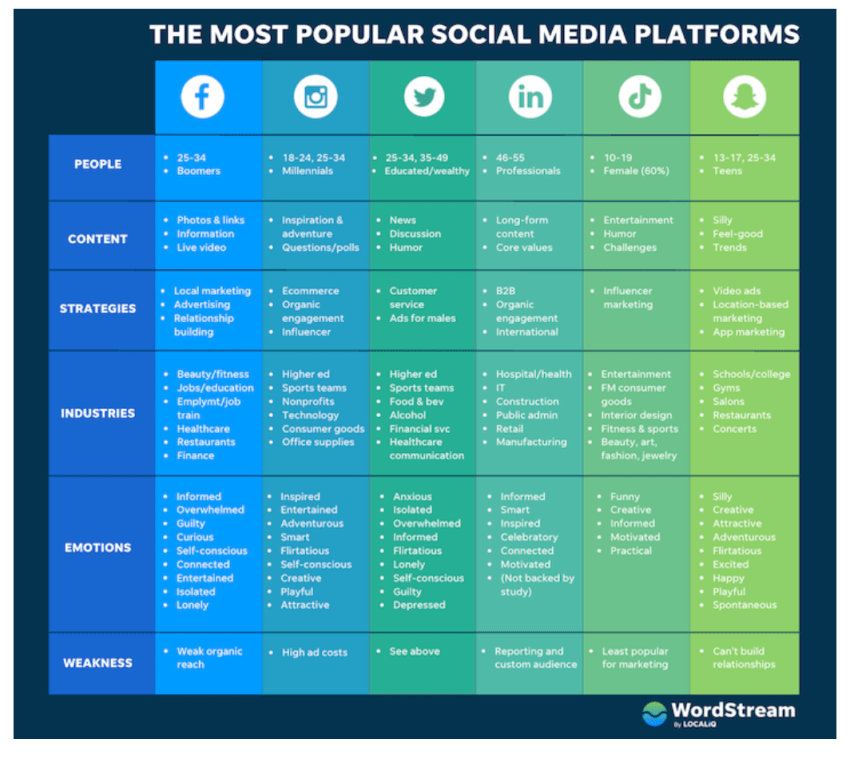
The strategy is clear: Match your social media profiles with your brand’s persona and audience. Incorporate a mix of images, videos, sharp industry insights, and influencer marketing.
5. Foster connections through email
As social media algorithms become more volatile, focusing on marketing channels that you have more control over is vital.
Engaging with your email list is the best way to build direct relationships. Being consistent and adding value to someone’s day via their inbox helps your brand stand out. Research consistently backs this up: Email marketing regularly outperforms social media ROI, delivering impressive click-through rates and conversion metrics.
Best Practices for Building Your Online Presence
Keep the following best practices handy when building an online presence for your business:
1. Experiment with AI tools for content
It’s impossible to miss the rise of generative AI. Major players like Gemini (formerly Bard) and ChatGPT can streamline your marketing workflow.
Whether brainstorming social media ideas for your content calendar or summarizing customer feedback, there are endless business applications. Use AI to handle the heavy lifting of data analysis and drafting, but ensure a human edits the final output to maintain your authentic brand voice.

2. Optimize for the new world of AI-driven search
Search and local marketing are evolving. Zero-click searches are becoming more common as AI provides answers directly on the results page.
On the bright side, AI-assisted searches streamline how customers find relevant businesses. As platforms like Bing (via Copilot) and Google (via Gemini) integrate these tools, the systems will deliver more accurate results based on user intent.
Your goal should be to optimize your content not just for keywords, but for answers. Become the cited source that the AI uses to answer consumer questions.

3. Master the art of short-form video
Short-form videos are an extremely powerful tool in your content arsenal. Whether it’s for TikTok, Instagram Reels, or YouTube Shorts, video is king. Video traffic accounts for over 82% of all consumer internet traffic.
Videos with killer hooks (within the first 3 seconds) targeted at an audience’s specific needs can generate huge engagement. If video production has you shaking your head, enlist the help of an expert or use AI video tools to transform basic clips into highly engaging content.
4. Launch a podcast
Brands are constantly hunting for fresh platforms where they can truly be noticed. Enter the world of podcasting — an avenue to captivate new customers on a massive scale.
Listeners trust podcast hosts more than almost any other influencer. Why? Because podcasts feel authentic, intimate, and genuine. This helps bridge the trust gap and allows brands to overcome skepticism. While starting a podcast takes effort, it remains a high-leverage channel to foster profound relationships with your audience.

Maintaining and Growing Your Online Presence
Now that you have the basics covered, it’s time to grow and retain attention. Your competitors are active, so to stand out, you must turn visitors into fans.
Streamlining this process is simple when you focus on these key strategies:
- Stay consistent: Consistency is the key to brand recognition. Whether it’s your posting schedule or tone of voice, deliver a uniform brand persona across every touchpoint.
- Engage: Think of your online presence as a community hub. Rather than posting and ghosting, answer questions and address critiques.
- Team up: Brand collaborations and guest posts act like word-of-mouth endorsements.
- Invest in advertising: Digital ads help new brands struggling with organic visibility to boost sales and community growth.

Key Takeaways on Building Online Presence for Your Brand
Whether you’re a brick-and-mortar store or an online business, your web presence is your key to persuading and retaining your audience.
Here’s a refresher on our most important takeaways for 2026:
- Consumer behavior: A massive 99% of consumers use the internet to discover local businesses.
- SEO: The top organic result is powerful, but ranking in AI Overviews is the new frontier.
- Trust factor: Responsiveness to reviews is non-negotiable; it increases the likelihood of a customer choosing you by 41%.
- Consistency: Your online brand voice should be steady, engaging, and evolving.
What’s next?
Seeking out a brand online has changed. Visitors won’t necessarily reach your homepage first; they might find you through a TikTok, an AI summary, or a review response.
If you’re struggling to keep track of everything in the omnichannel world, Nextiva has the solution. We enable you to make the most of omnichannel communication across voice, video, and web chat — all through a single user interface. Features like AI-powered transcription and summarization allow you to instantly capture customer sentiment and manage your reputation in no time.
Optimize your online presence, interact with your customers in real time thanks to advanced routing, and analyze your performance with real-time dashboards. Don’t miss any social media interactions — or any customers.
Better Online Reputation Management With Nextiva
Stop switching between tools as you market, engage and support your customers. Do it all from one, integrated customer experience platform.

















 Marketing & Sales
Marketing & Sales 








